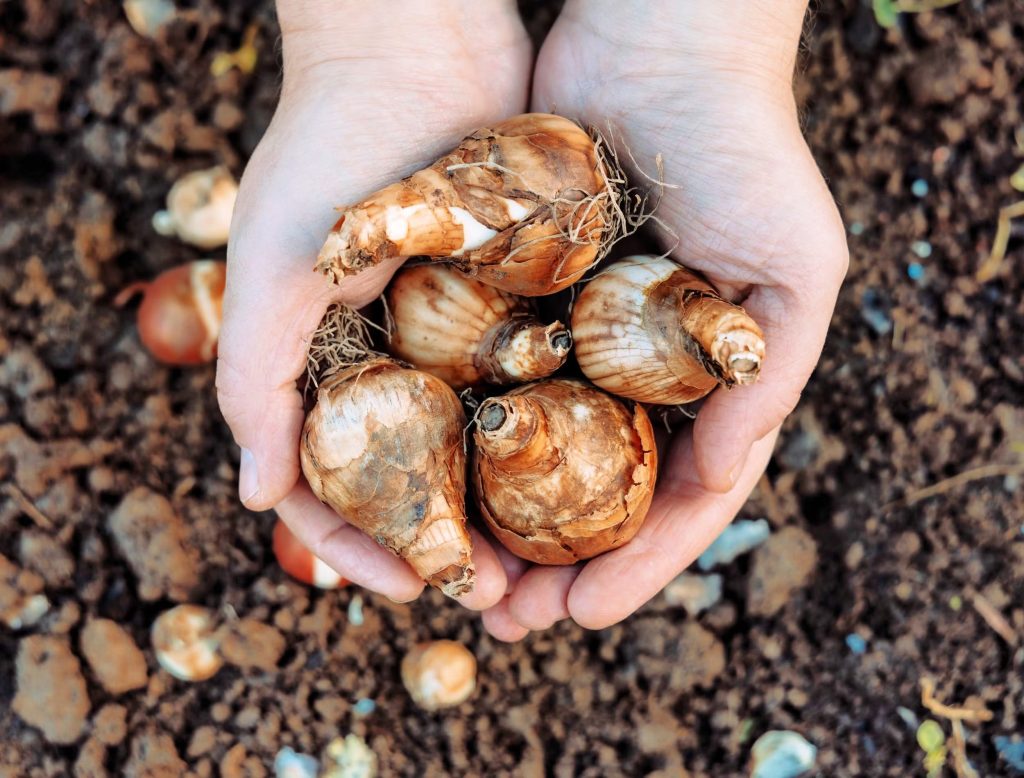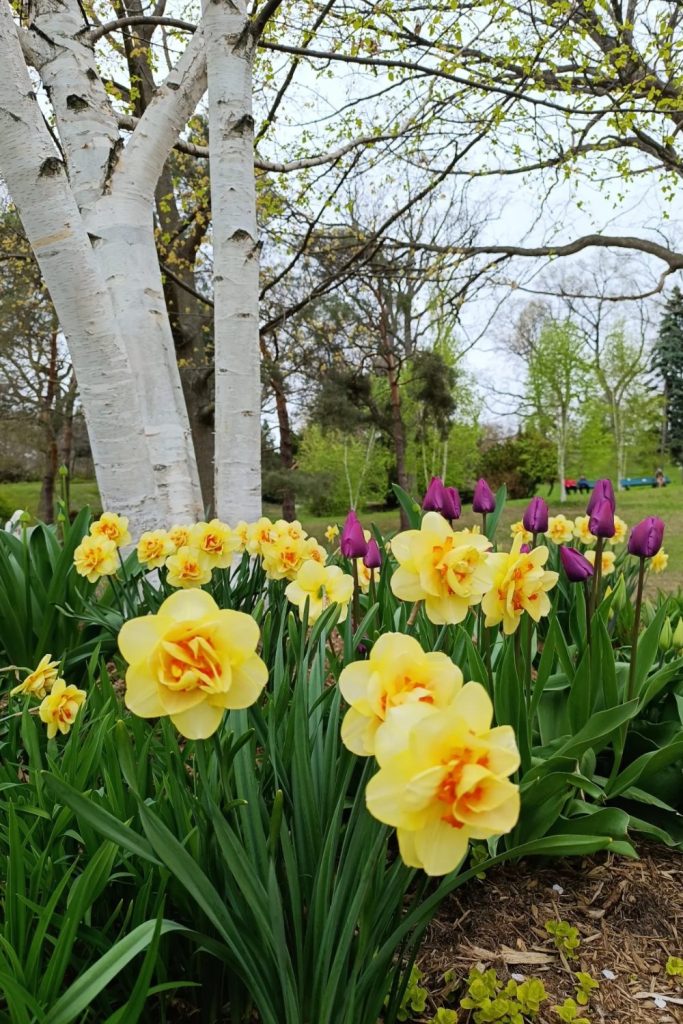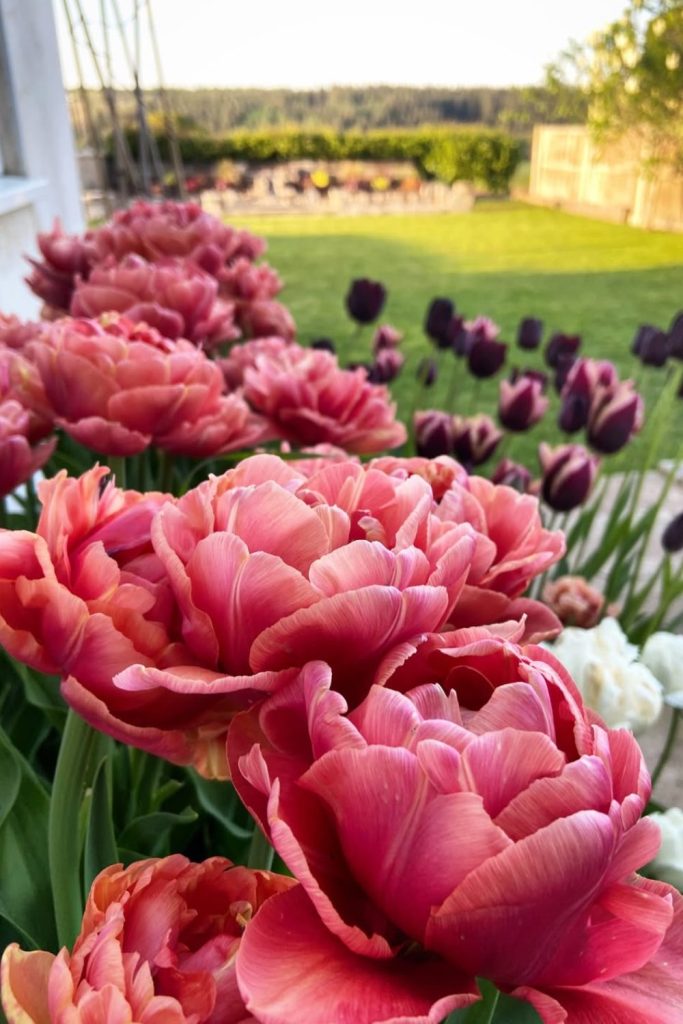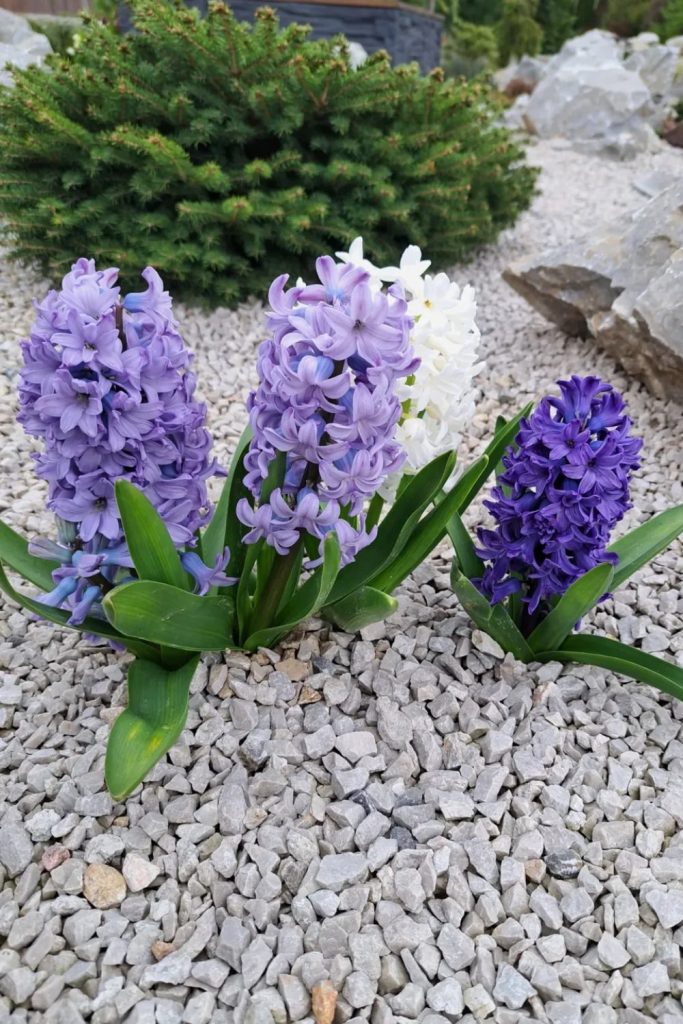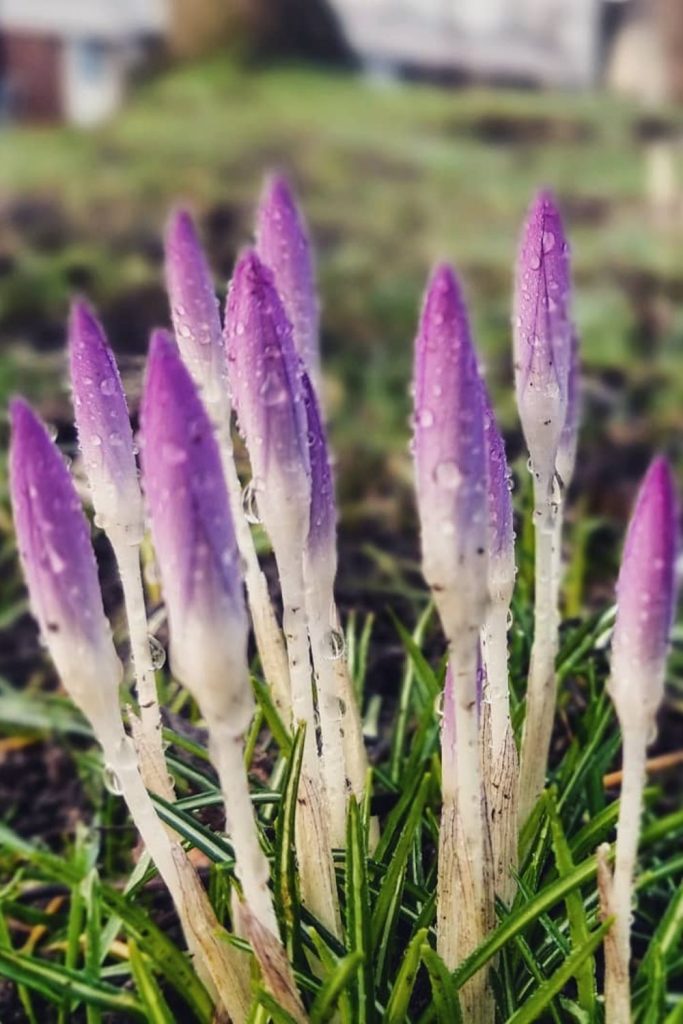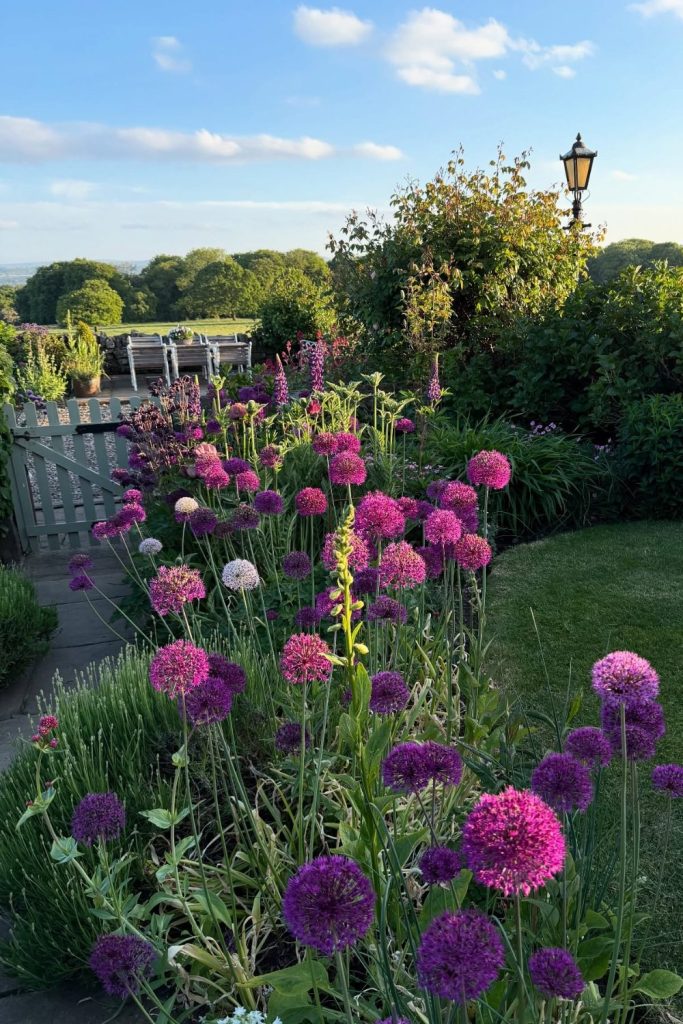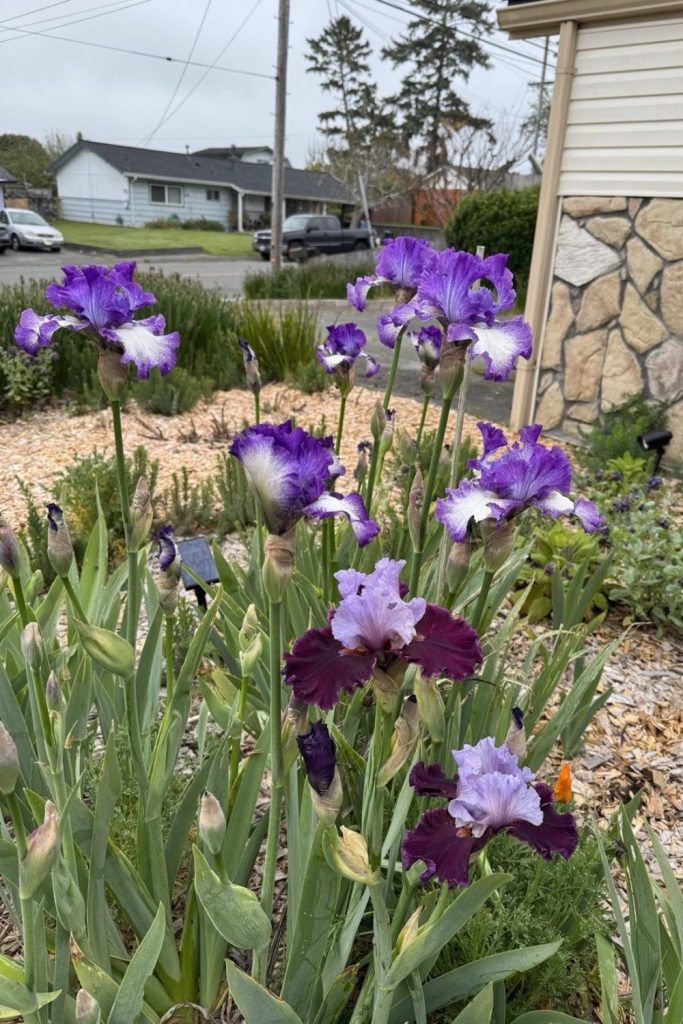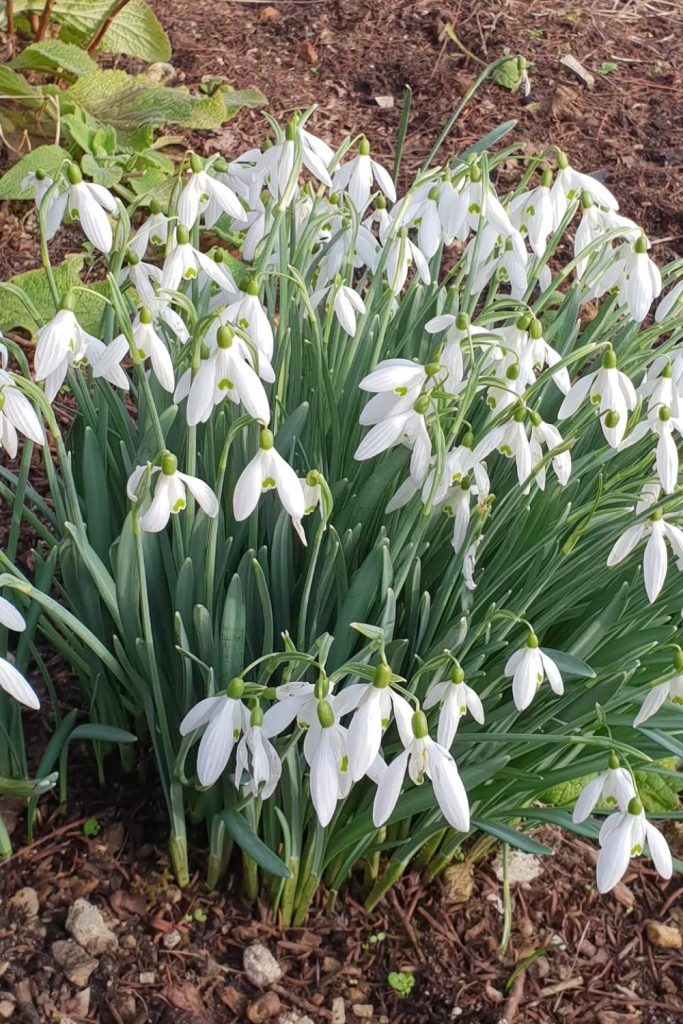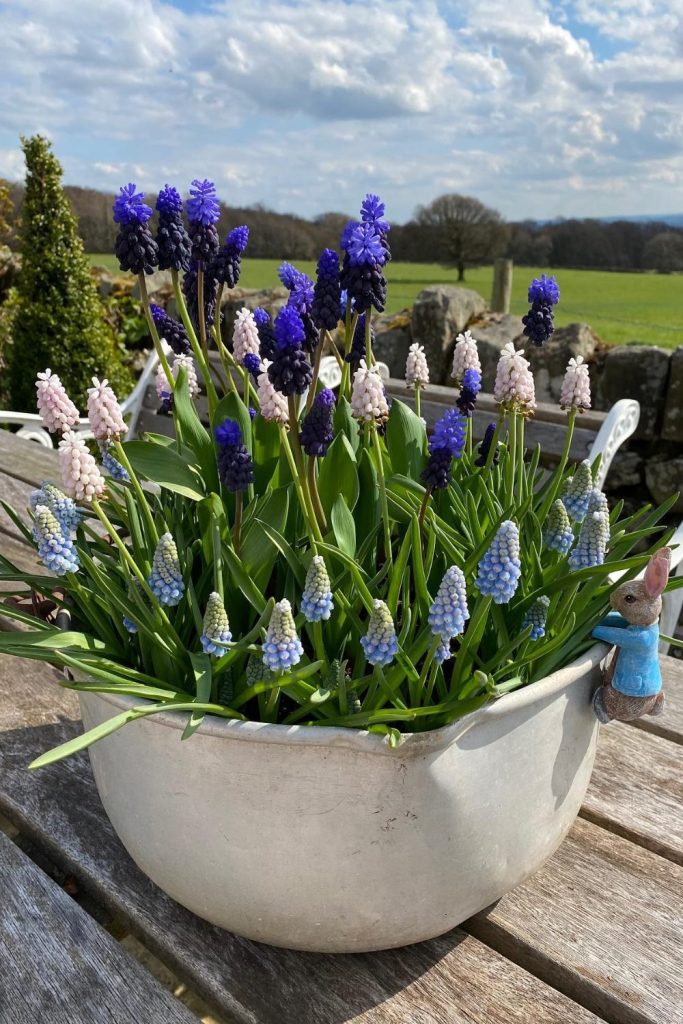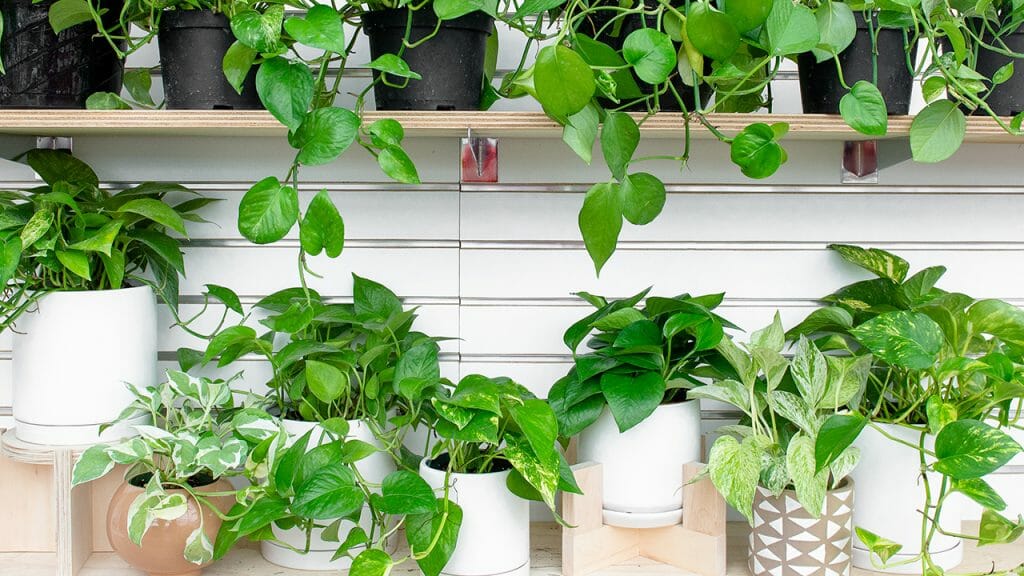Picture this: it’s early spring, the air’s still cool, and your garden suddenly erupts with color — tulips, daffodils, crocuses, all showing off because of one smart move you made months earlier. Yep, that’s the magic of planting bulbs in fall. 🍂
Planting bulbs now is like giving your future self a gift — one that blooms when you need it most. The trick? Timing! Aim to get them in the ground between late September and November, once the soil cools below 60°F. That chill is what kick-starts their growth for those stunning spring flowers.
Today, you’ll find everything you need to get it right, from which bulbs thrive in your area, to prepping and planting tips that even beginners can master. 🌷
Whether you’re just dipping your toes into gardening or adding to an already blooming display, fall bulb planting is one of the easiest (and most satisfying) ways to bring long-lasting beauty to your yard year after year.
Why Fall Is the Best Time for Planting Bulbs
Fall planting gives bulbs the cold winter period they need to bloom beautifully in spring. The cooler temperatures help bulbs develop strong roots before going dormant for winter.
Benefits of Fall Bulb Planting
Planting bulbs in fall gives them time to settle in before winter arrives. This head start makes a big difference for healthy spring growth.
Root Development: Your bulbs use the cool fall weather to grow strong root systems. These roots form before the ground freezes and help the bulb survive winter.
Natural Timeline: Fall bulbs follow nature’s schedule. They rest during winter and wake up when spring temperatures rise.
Better Blooms: Bulbs planted in fall produce bigger, more colorful flowers than those planted at other times. The long cold period gives them energy for spectacular spring displays.
Less Work: Fall-planted bulbs need less care than spring plantings. The winter snow and rain provide most of the water they need.
Spring Garden Transformation
Your fall planting work pays off with early spring color when most plants are still sleeping. Spring bloomers bring life to bare gardens after winter.
First Color: Crocuses and daffodils pop up through late snow. They bloom weeks before most other plants start growing.
Long Season: Different bulbs bloom at different times. Early, mid, and late spring varieties keep color coming for months.
Easy Planning: You can create beautiful flower combinations by mixing bulbs with different bloom times. Plant them together in fall for a perfect spring show.
Your spring garden will have bright tulips, cheerful daffodils, and fragrant hyacinths ready to greet warm weather.
How Fall Temperatures Aid Bulb Growth
Cool fall soil helps bulbs in ways that warm spring soil cannot. The temperature changes trigger important growth processes inside the bulb.
Soil Temperature: Plant when soil stays below 60°F consistently. This usually happens from late September through November.
Root Growth: Cool soil encourages root development without triggering top growth. Bulbs focus their energy on building strong foundations.
Winter Chilling: Most spring bulbs need 12-16 weeks of cold temperatures below 40°F. This cold period breaks the bulb’s dormancy and prepares it to bloom.
Timing Matters: Plant 6-8 weeks before your first hard frost. This gives roots time to grow before winter sets in.
Without proper fall planting and winter chilling, your bulbs may not bloom at all in spring.
Best Bulbs to Plant in Fall
These four spring bloomers form the foundation of any successful bulb garden and offer the best combination of beauty, reliability, and ease of planting. Each variety brings unique colors and bloom times to extend your spring flower season.
Daffodils: Reliable and Cheerful
Daffodils are among the most dependable spring bulbs you can plant. These bright yellow and white flowers push through snow and bloom year after year with little care.
Planting Requirements:
- Plant 6-8 inches deep
- Space 4-6 inches apart
- Choose sunny to partial shade locations
You can select from early, mid, and late-season varieties. Early daffodils bloom in March, while late varieties flower into May. This gives you six weeks of continuous blooms.
Popular varieties include:
- ‘Mount Hood’ – white flowers that naturalize well
- ‘Ice Follies’ – white petals with yellow centers
- ‘Minnow’ – small, fragrant flowers perfect for rock gardens
Deer and rabbits avoid daffodils completely. The bulbs contain toxins that make them pest-resistant. This makes them perfect for areas where wildlife browsing is a problem.
Daffodils work well in flower arrangements. Cut stems when buds show color for the longest vase life.
Tulips: Vibrant Spring Classics
Tulips bring bold colors and elegant shapes to your spring garden. These flower bulbs come in almost every color except true blue.
Plant tulip bulbs 8-10 inches deep in well-draining soil. Space them 4-5 inches apart for the best display. Choose locations with full sun to partial shade.
Bloom time categories:
- Early tulips – March to early April
- Mid-season tulips – mid to late April
- Late tulips – May to early June
Darwin hybrid tulips are the most reliable for repeat blooming. Triumph tulips offer the widest color range. Parrot tulips have ruffled petals that add texture to gardens.
Tulips make excellent cut flowers. Their strong stems and large blooms create stunning bouquets. Cut them early in the morning for best results.
Plant new tulip bulbs each fall in cold climates. Many varieties act like annuals and may not return reliably after the first year.
Hyacinths: Colorful and Fragrant Blooms
Hyacinths produce the most fragrant flowers among spring bulbs. A small planting can perfume your entire garden with sweet scent.
These spring bloomers grow 8-12 inches tall. Their thick flower spikes are packed with small, waxy blooms. Colors include pink, purple, blue, white, yellow, and salmon.
Growing tips:
- Plant 6 inches deep
- Space 6 inches apart
- Need full sun to partial shade
Hyacinth bulbs are larger than most spring bulbs. Handle them carefully as they can cause skin irritation. Wear gloves when planting.
These flower bulbs work well in containers and window boxes. Plant them near walkways and patios where you can enjoy their fragrance. They also make good companion plants for tulips and daffodils.
Hyacinths naturalize slowly but reliably. The flower spikes may become smaller after the first year, but they will continue blooming for many seasons.
Crocuses: Early Signs of Spring
Crocus bulbs are the first spring bulbs to bloom each year. These small flowers often push through snow to signal winter’s end.
Plant crocus bulbs 3-4 inches deep and 3 inches apart. They prefer well-draining soil and full sun to partial shade. These hardy bulbs tolerate poor soil better than larger spring bloomers.
Two main types:
- Snow crocus – blooms in late winter, very small flowers
- Dutch crocus – larger flowers in early spring
Colors include purple, white, yellow, and striped varieties. Plant different colors together for the best show.
Crocuses naturalize easily in lawns and under trees. They multiply quickly to form carpets of color. Let the foliage die back naturally before mowing.
These spring bulbs are perfect for rock gardens and borders. Their small size makes them ideal for planting between perennials. Squirrels and chipmunks sometimes dig up crocus bulbs, so protect newly planted areas with wire mesh.
Other Exciting Fall Bulbs to Consider
Beyond the classic tulips and daffodils, many unique bulbs offer stunning spring displays with distinctive shapes, colors, and growing habits. These specialty varieties include dramatic alliums with globe-shaped flowers, early-blooming snowdrops, and colorful anemones that bring diversity to your garden.
Alliums and Ornamental Onions
Alliums create some of the most striking displays in spring gardens. These ornamental onions produce round flower heads on tall stems that look like purple or white fireworks.
Popular allium varieties include:
- Giant allium – Purple globes up to 6 inches wide
- Drumstick allium – Smaller, dense purple flowers
- White allium – Clean white spherical blooms
Plant allium bulbs 4 to 6 inches deep in well-draining soil. They prefer full sun and dry conditions once established.
The unique ball-shaped flowers make excellent cut flowers. They also dry well for winter arrangements. Alliums bloom from late spring through early summer.
Most varieties grow 2 to 4 feet tall. Plant them behind shorter flowers so their height doesn’t block other plants.
Irises and Their Varieties
Irises add elegant beauty to spring gardens with their distinctive three-petaled flowers. Dutch iris and reticulata iris are the most common fall-planted varieties.
Dutch iris bloom in late spring with flowers in purple, blue, yellow, and white. They grow 18 to 24 inches tall. Plant bulbs 4 inches deep in sunny spots.
Reticulata iris appear much earlier in late winter. These small flowers reach only 4 to 6 inches tall. They work well in rock gardens or containers.
Key iris growing tips:
- Plant in fall for spring blooms
- Need good drainage to prevent rot
- Prefer full sun locations
- Space bulbs 3 to 4 inches apart
Iris flowers last about two weeks. The sword-like leaves stay attractive for months after blooming ends.
Snowdrops, Fritillaria, and Specialty Bulbs
Snowdrops are among the earliest spring flowers. These small white flowers push through snow in late winter. They have distinctive bell-shaped flowers that hang downward.
Plant snowdrop bulbs 3 inches deep in partial shade. They spread naturally to form large colonies over time.
Fritillaria offers unique checkered patterns on their bell-shaped flowers. Crown imperial fritillaria grows 3 feet tall with orange or yellow flowers. Snake’s head fritillaria has purple and white checkered petals.
Other specialty bulbs to consider:
- Leucojum – Similar to snowdrops but larger
- Winter aconite – Bright yellow flowers with green collars
- Glory of the snow – Blue or white star-shaped flowers
These early bloomers work well under trees or in naturalized areas. They prefer cool, moist conditions.
Grape Hyacinths, Anemones, and More
Grape hyacinths produce dense spikes of tiny blue flowers that look like clusters of grapes. They bloom in early spring and naturalize easily.
Plant grape hyacinth bulbs 3 inches deep in fall. They prefer full sun but tolerate partial shade. The flowers last 3 to 4 weeks.
Anemone bulbs create colorful spring displays. These windflowers come in red, pink, blue, and white varieties. Soak the bulbs overnight before planting.
Additional exciting bulbs:
- Bluebells – Drooping blue bell-shaped flowers
- Camassia – Tall spikes of blue or white flowers
- Erythronium – Nodding lily-like flowers with mottled leaves
Most of these bulbs prefer partial shade and moist soil. They work well in woodland gardens or naturalized areas.
Plant smaller bulbs like grape hyacinths in groups of 25 or more for the best impact. Larger bulbs like anemones look good in groups of 10 to 15.
How to Choose the Right Bulbs for Your Garden
Picking the right bulbs means thinking about your climate, sunlight, and local wildlife. Your success depends on matching bulbs to your growing zone and choosing varieties that deer won’t eat.
Factors for Selecting Bulbs
Your garden’s sunlight is the most important factor when choosing bulbs. Most spring bulbs need at least 6 hours of direct sunlight each day to bloom well.
Early bloomers like daffodils can handle spots that get sun before trees leaf out in spring. This gives you more planting options in your yard.
Bloom time affects how long your garden stays colorful. Plant early, mid-season, and late varieties of the same bulb type. This gives you 6 weeks or more of continuous flowers.
Flower height matters for garden design. Small bulbs like crocus grow 4-8 inches tall. Large bulbs like tulips and daffodils reach 8-24 inches.
Consider what you want from your bulbs:
- Cut flowers: Choose tulips and daffodils with long, sturdy stems
- Natural look: Pick bulbs that spread over time like crocus and grape hyacinth
- Easy planting: Select small bulbs that only need 4-inch deep holes
Understanding Hardiness Zones
Your hardiness zone determines which bulbs will survive winter in your area. Spring bulbs need cold winter temperatures to bloom properly.
Most popular spring bulbs work well in zones 3-8. These include tulips, daffodils, crocus, and hyacinth.
Zone 6-7 gardeners have the most options. The cold winters trigger the chemical changes bulbs need for spring blooms.
Warmer zones may need pre-chilled bulbs from garden centers. These bulbs got the cold treatment they need before you plant them.
Check your specific zone before buying bulbs. Some varieties handle extreme cold better than others. Daffodils usually survive colder winters than tulips.
Plant bulbs at the right time for your zone. This is typically September through November, depending on your location.
Deer-Resistant and Critter-Proof Options
Deer and rodents can destroy bulb gardens, but some bulbs taste bad to animals. These deer-resistant bulbs give you beautiful flowers without the damage.
Large deer-resistant bulbs include:
- Daffodils (all varieties)
- Hyacinth
- Fritillaria
- Camassia
- Summer snowflake
Small deer-resistant bulbs work well as ground cover:
- Grape hyacinth
- Squill
- Dutch iris
- Snowdrops
Remember that hungry animals will eat almost anything when food is scarce. Plant these bulbs in large groups for the best color impact.
Daffodils are your safest choice. Animals rarely bother them because they contain toxic compounds. They also come in early, mid, and late varieties for extended blooms.
Preparing and Planting Bulbs for Success
Good soil preparation and proper planting techniques make the difference between weak blooms and stunning spring flowers. The right soil conditions, correct depth, and smart spacing will help your bulbs develop strong roots and produce healthy growth.
Soil Preparation and Organic Matter
Your bulbs need well-drained soil to prevent rot and disease. Test your soil by digging a hole and filling it with water. If water sits for more than a few hours, you need better drainage.
Add compost or aged manure to improve both drainage and soil nutrients. Work in 2-3 inches of organic matter into the top 6-8 inches of soil. This creates loose, rich conditions that bulbs love.
For heavy clay soil, mix in coarse sand along with compost. This combination prevents waterlogged conditions that kill bulbs. Light sandy soils benefit from extra compost to hold moisture and nutrients.
Check your soil temperature before planting. Wait until soil reaches 60°F or cooler and stays that way. This usually happens 6-8 weeks before your ground freezes hard.
Remove weeds, rocks, and old plant debris from your planting area. These compete with your bulbs for nutrients and water.
The Ideal Planting Depth and Spacing
Plant your bulbs at a depth three times their height. A 2-inch tulip bulb goes 6 inches deep. A small crocus bulb only needs 3-4 inches of depth.
Use this simple guide for common bulbs:
- Large bulbs (tulips, daffodils): 6-8 inches deep
- Medium bulbs (hyacinths, alliums): 4-6 inches deep
- Small bulbs (crocuses, snowdrops): 3-4 inches deep
Space bulbs 2-3 times their width apart. Larger bulbs need 4-6 inches between each one. Small bulbs can be planted just 2-3 inches apart.
Plant bulbs with the pointed end up. If you can’t tell which end is which, plant the bulb on its side. Most bulbs will find their way up naturally.
Tips for Planting in Different Soil Types
Clay soil holds too much water and gets hard when dry. Mix in coarse sand and compost at a 1:1:1 ratio with your existing soil. Create raised beds or mounds if drainage stays poor.
Sandy soil drains fast but dries out quickly. Add lots of compost and organic matter to help hold moisture. You may need to water more often in fall dry spells.
Rocky soil needs extra work but can grow great bulbs. Remove large rocks and add compost to fill spaces. The natural drainage often works well for bulb planting.
For any soil type, avoid planting bulbs where water collects after rain. Choose slopes or higher areas instead. Your bulbs will thank you with better growth and fewer problems.
Care Tips After Planting and Through Winter
Proper care after bulb planting ensures your flower bulbs survive winter and produce strong blooms in spring. Focus on adequate watering, protection from frost and pests, and preparing the soil for healthy spring growth.
Watering and Mulching Recommendations
Water your newly planted bulbs deeply right after planting. Soak the soil to the full planting depth to help roots develop before winter arrives.
Apply water again before the ground freezes hard. This second watering helps bulbs establish strong root systems during fall.
Add a 2 to 3 inch layer of mulch over your bulb planting areas. Use materials like shredded leaves, straw, or wood chips.
Mulch provides several benefits:
- Keeps soil moisture steady
- Stops weeds from growing
- Prevents frost heave damage
- Insulates bulbs during cold weather
Avoid watering during winter months when the ground is frozen. Too much moisture in winter can cause bulbs to rot.
Remove heavy mulch layers in early spring when shoots start appearing. This lets sunlight reach new growth.
Protecting Bulbs from Frost and Wildlife
Check your local frost dates to time your mulching correctly. Apply mulch after the first light frost but before hard freezes begin.
Squirrels and other animals often dig up freshly planted bulbs. Cover planting areas with wire mesh or hardware cloth.
Wildlife protection methods:
- Lay chicken wire flat over planted areas
- Use bulb cages for individual plantings
- Plant deer-resistant varieties like daffodils
- Sprinkle cayenne pepper around planting sites
Remove wire coverings in spring before shoots emerge. Mark your bulb locations so you remember where they are planted.
Some flower bulbs need extra protection in harsh climates. Add extra mulch in areas that don’t get full sun coverage.
Supporting Spring Growth
Start watering weekly when green shoots appear in spring. This supports strong flower development during the growing season.
Apply a low-nitrogen fertilizer when shoots are 2 inches tall. Use a 9-6-6 formula or similar balanced fertilizer around the bulbs.
Spring care checklist:
- Water during dry spells
- Apply fertilizer once shoots emerge
- Remove winter mulch gradually
- Avoid walking on emerging shoots
Let bulb foliage die back naturally after flowers fade. The leaves create energy for next year’s blooms.
Mark areas where bulbs are planted so you don’t accidentally damage them during spring garden work.

